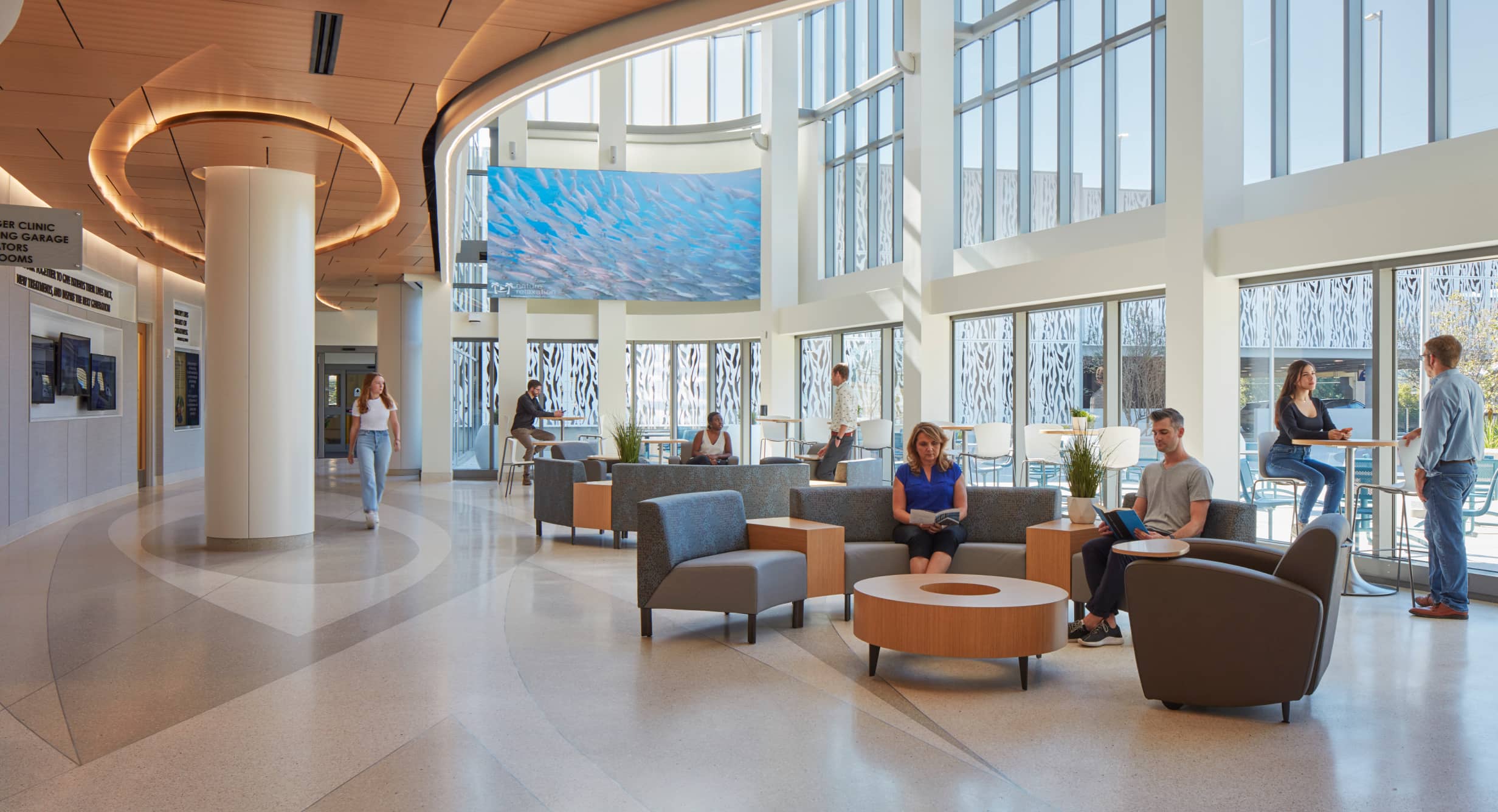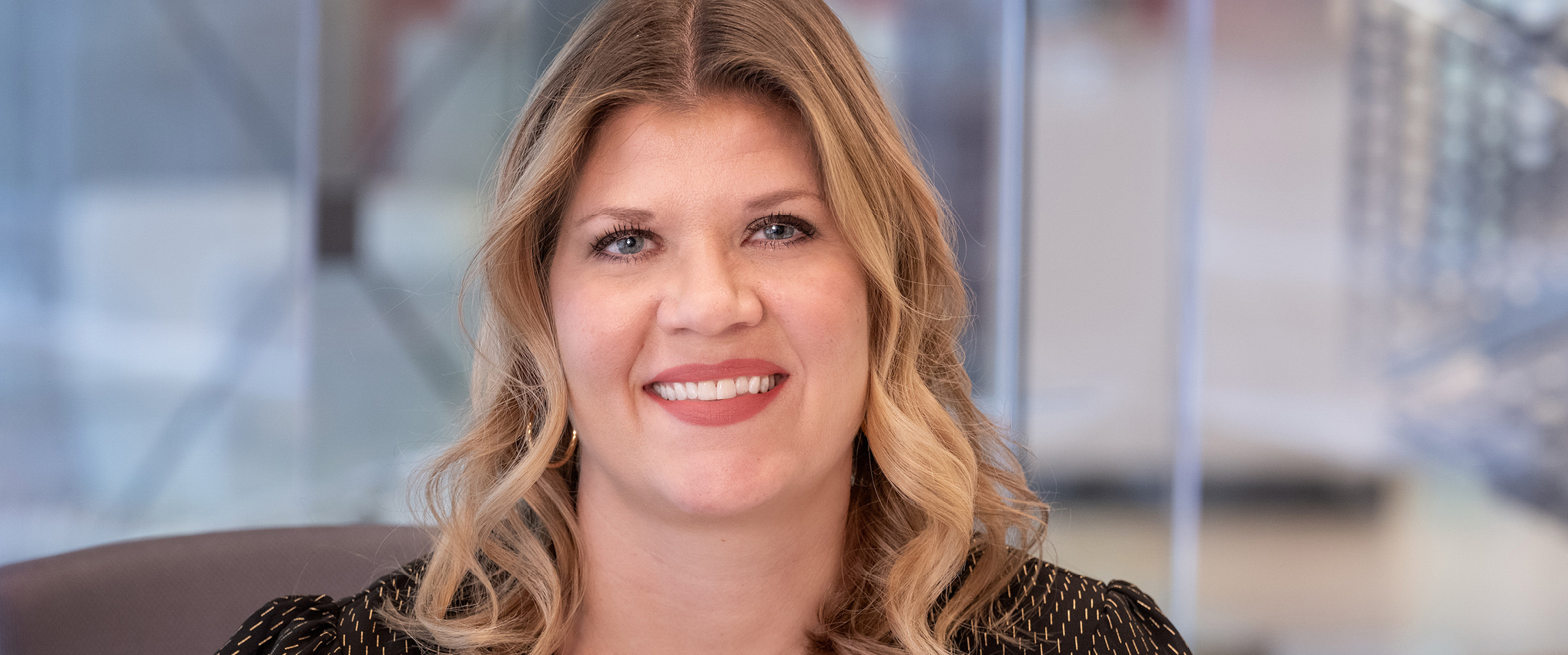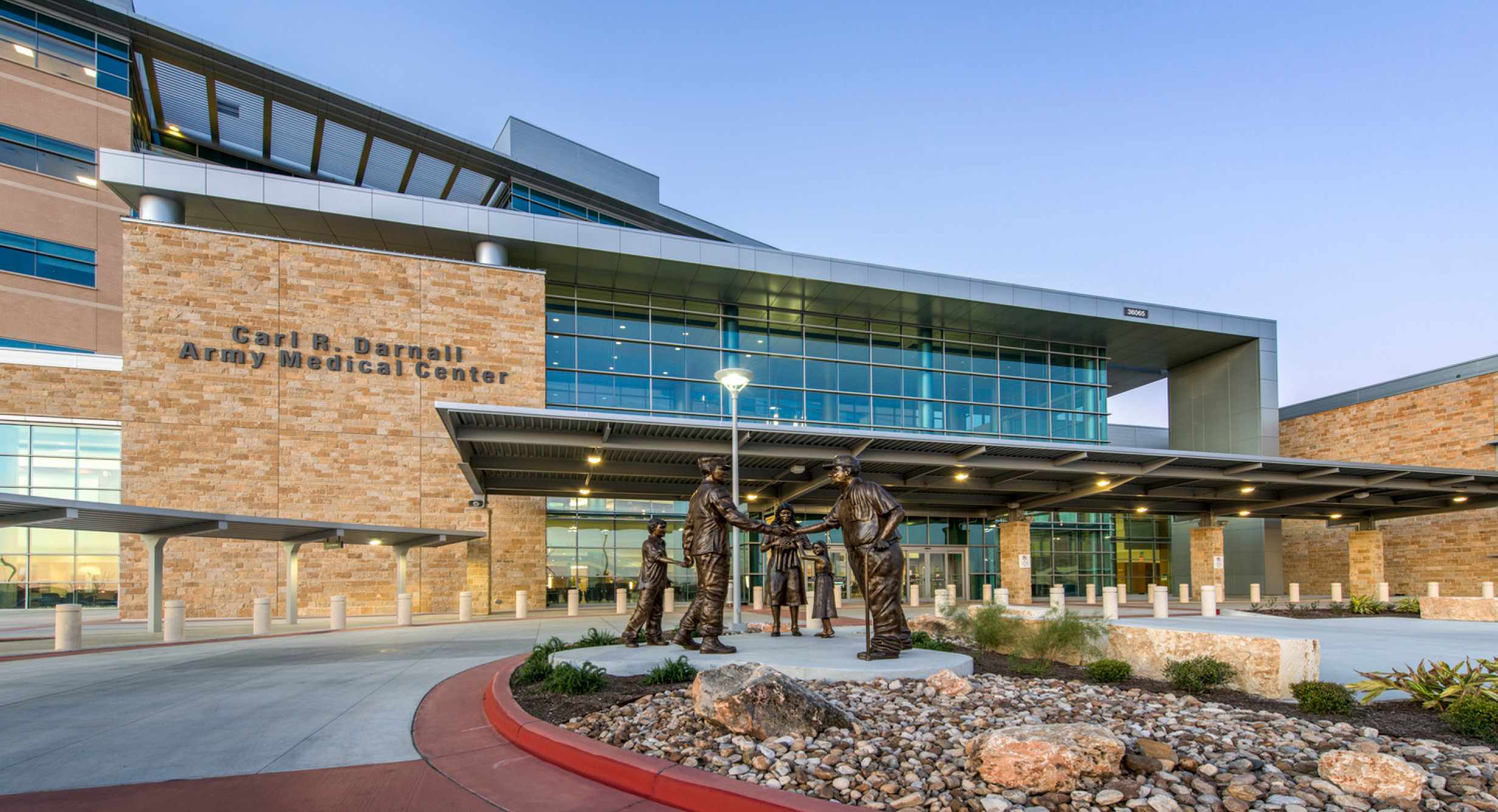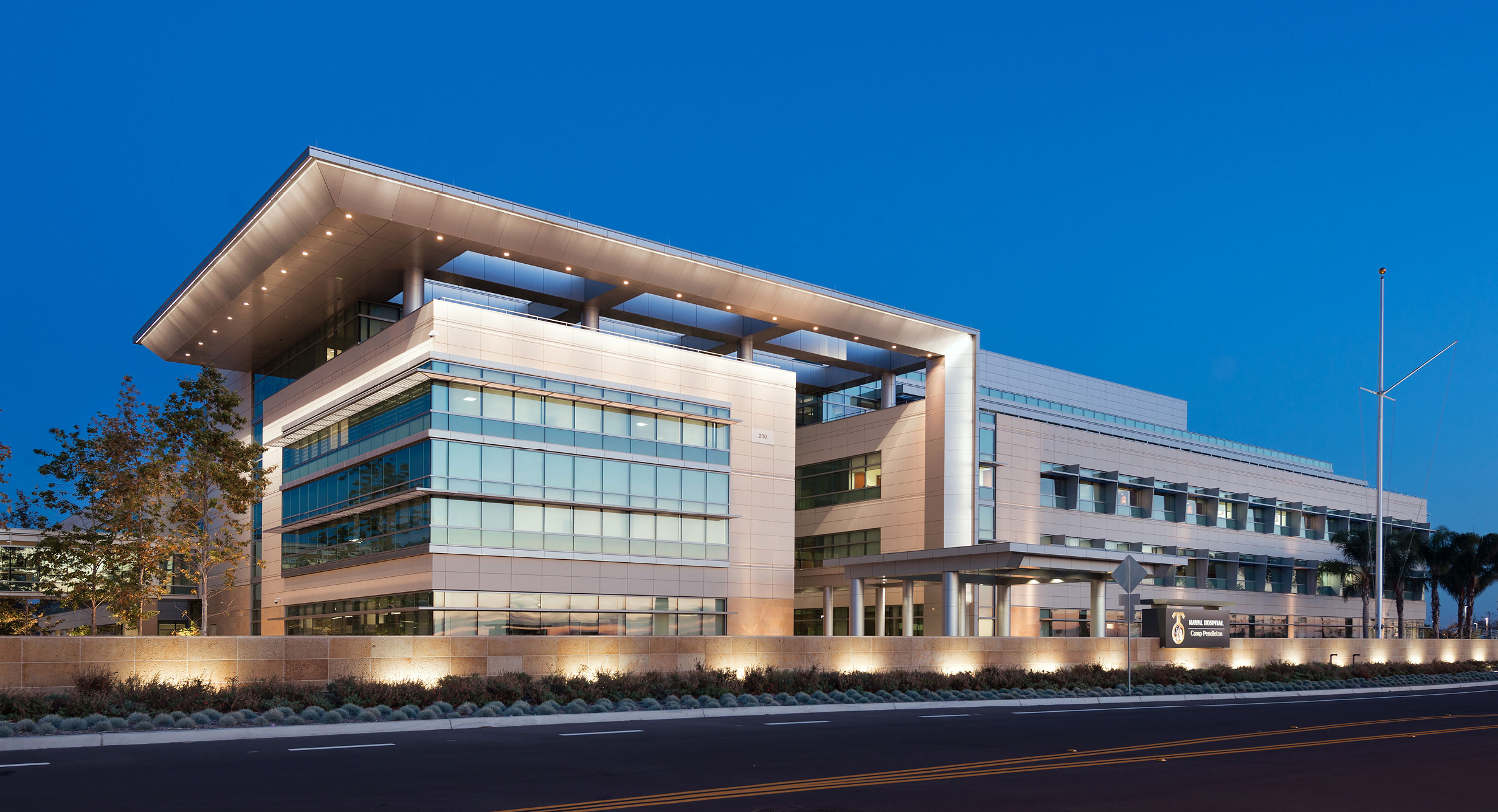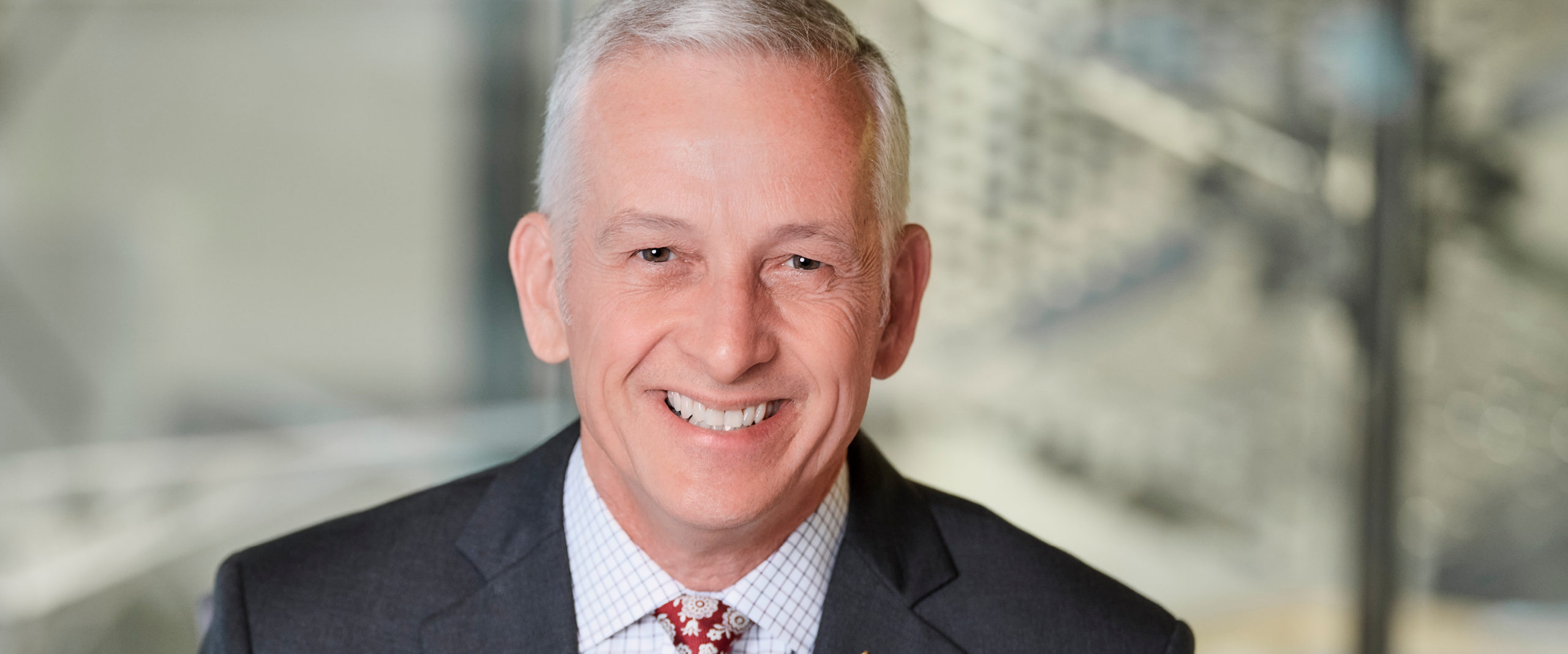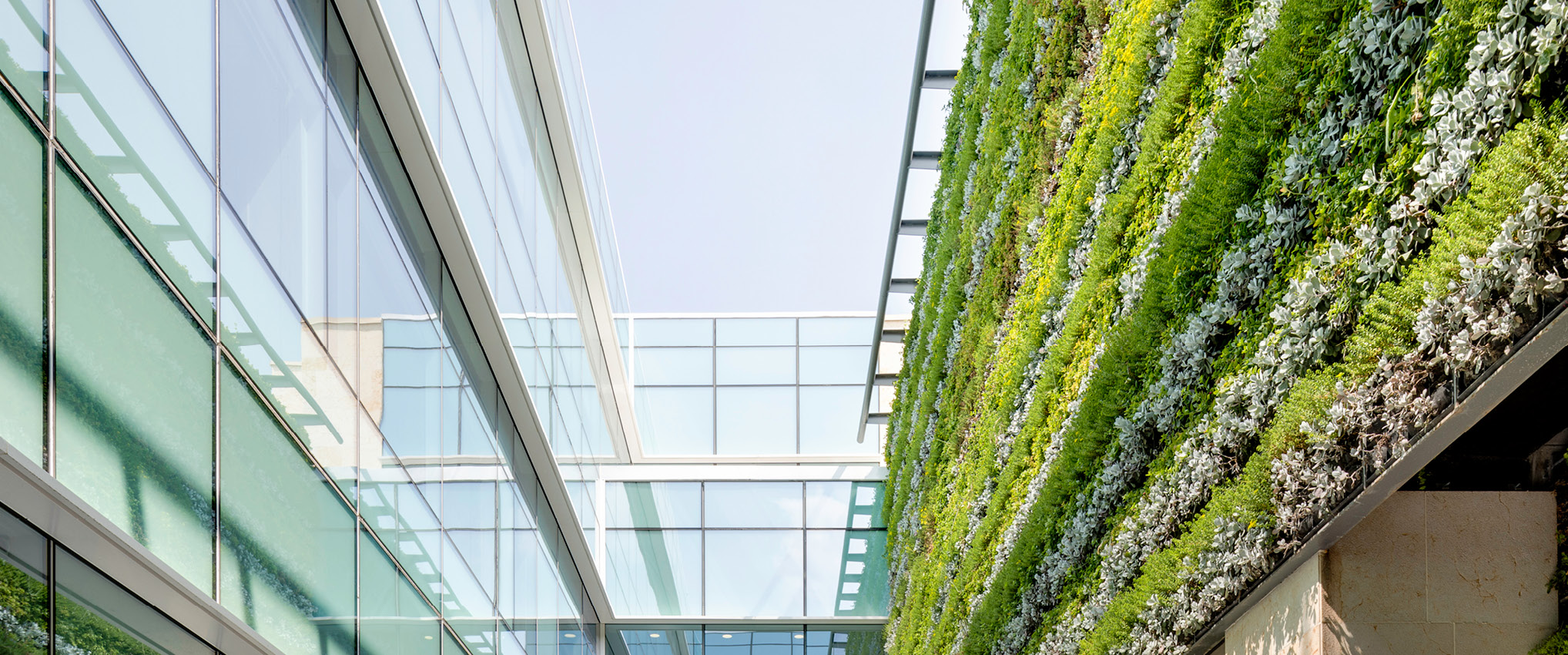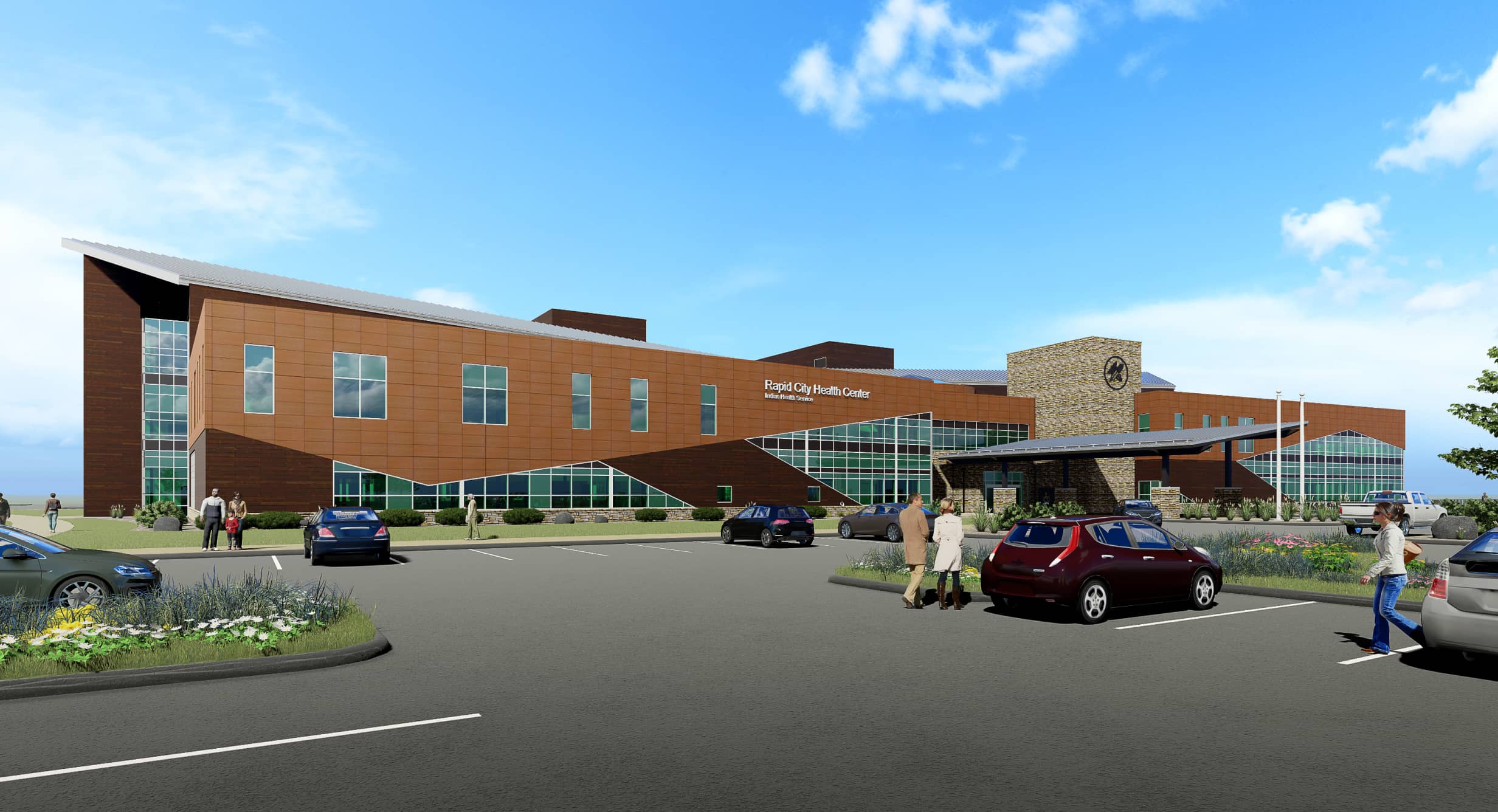
Indian Health Services Rapid City Health Center Consolidation of Health Care Services Unites Larger Tribal Community
Rapid City, South Dakota, USA
The Challenge
The design team of Flintco & Skull Construction Services Inc., designer of record Childers Architects, a Native American Tribal small business; and HKS, which served as a consultant for medical planning and interior design, faced the daunting challenge of consolidating 10 existing clinic-base buildings into three new health centers through a combination of demolition and new construction — all done while maintaining full operations at the project site.
The new facility, which includes 200,000 square feet (18,580 square meters) of new construction, will support Indian Health Services (IHS) at one location to provide better, more robust services to the Tribal community.
The Design Solution
The interior design solution provided by HKS for the IHS Rapid City Health Center project was based on the design-build/RFP bridging documents prepared by Seven Generations A+E and is inspired by the surrounding landscape, the tribal communities it serves, and the desire to create a trusting and engaging place of care. Natural elements such as stone veneer and wood panels used on the building exterior were extended into the interior spaces to provide a seamless transition between the natural and built environments.
The balance of wood tones, textured stone and nature-inspired color palettes presents a comfortable healing atmosphere. Specific wood species and stone aesthetics intend to echo regional elements as the overall color palette emulates the sprawling grasslands, winding rivers, dynamic hills and canyons of South Dakota. As the building forms are mostly linear and geometric, representing the structure of the hills and canyons, the textile patterns and furniture styles incorporate the soft organic lines of the flowing prairie.
In addition to design elements inspired by the surrounding landscape, cultural pride is prominent in the circular rotunda lobby with a Lakota star skylight, flooding the building with daylight while providing a connection from the ground to the sky. Each tribe has a distinct landscape on which their reservation resides, and those characteristics were incorporated into the design of the building through its materials, color palette and positioning on the site.
Mimicking the great Missouri River, the east and west portions of the building are divided by a dramatic element called The River. The River acts as the life force of the facility, delivering natural daylight to the interior, while simultaneously guiding patients to services within.
On the main public east facade, the materials dance across the surfaces in a melodic harmony which references the buttes of the Black Hills, which lie not too many miles beyond. The north, south and west facades are defined more by repetition in the mullion spacing, which impresses upon users the idea of grasslands.
While both the main entrance on the east, and the urgent care/staff entrance on the west are clearly demarcated by canopies, the public entrance is also delineated by the Lakota Morning Star skylight and rotunda. The presence of this design feature creates a uniquely tribal space, giving ownership to the tribes who visit the facility. The Morning Star symbolizes the direction from which spirits travel to earth, and is a link between the living and dead, symbolizing immortality. Additionally, the Morning Star symbolizes hope and guidance, which is powerful visual language in relation to the history of the site on which the new facility is being built.
Outdoor spaces, such as the Healing Garden, were designed to tie healing people to the land, focusing the facility toward a healthier future while acknowledging the pain and trauma incurred as a result of the previous manifestations of the site.
The Design Impact
The project consolidates three tribal communities into one multi-specialty health center for better integrated continuum of care for patients.
The Rapid City Health Care Clinic building design concept was developed with organizational, tribal, and individual stakeholders alongside IHS’ Guiding Principles. These included designing a uniquely tribal facility that welcomed multi-generational visitors while incorporating traditional healing and medicines, alongside performance targets for the building, site features, and occupant comfort.
Energy savings measures, such as scheduled lighting controls, resulted in 38% energy cost savings and a combination of no-permanent irrigation strategy plus indoor water saving fixtures and fittings provided the building with more than a 35% reduction in potable water use. Interior finishes contributed to a more sustainable structure by considering materials with pre- and post-consumer recycled content, no volatile organic compounds (VOCs), local sourcing, and certifications like Environmental Product Declarations (EPDs) and Health Product Declarations (HPDs).

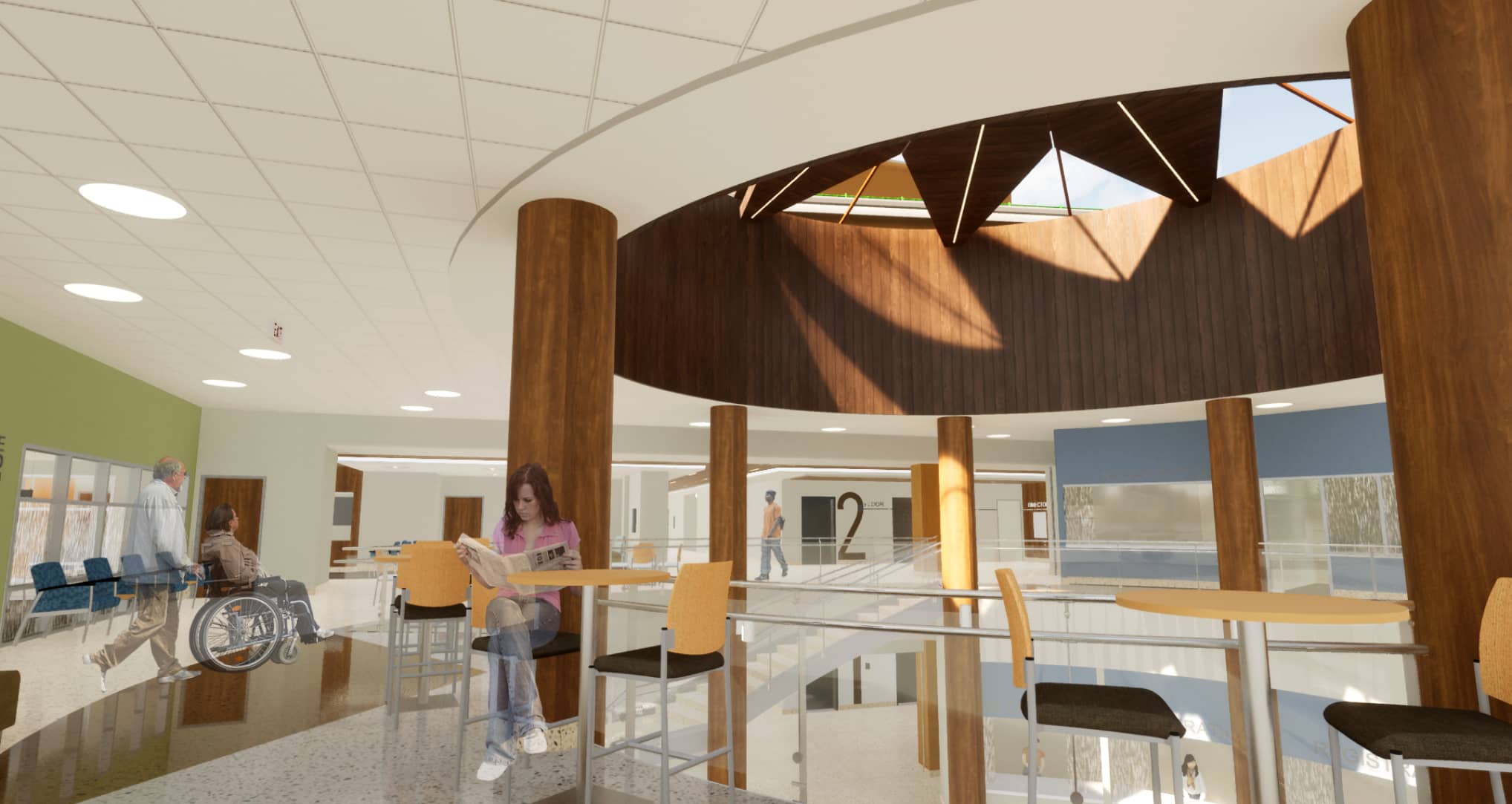
Project Features
- 200,000 square feet (18,580 square meters) of outpatient clinic space
- Ambulatory Care (audiology, dental, eye care, primary care, podiatry, and specialty care)
- Ancillary Services (diagnostic imaging, laboratory, pharmacy, and physical therapy)
- Preventive Services (environmental health, health education, public health nursing, public health nutrition, and wellness center)


